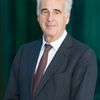Today the international community is gathered in New York to assess progress in combating AIDS, ten years after the historic United Nations General Assembly Special sessions that led to the creation of the Global Fund. It is important to reflect on the progress we have made since AIDS was first identified in the United States 30 years ago.
My mind goes back to 1981 when I had recently returned to Paris from my post-doctoral studies at Harvard and was working as clinical head at the Hospital Broussais. The sector under my control in the Department of Nephrology specialized in so-called "systemic" disease, or disease characterized by generalized abnormalities of the immune system.
I had heard talk and read reports about a mysterious immunodeficiency epidemic in the United States. My first direct contact with the disease however was not until two years later, when a Frenchman and his wife who had been repatriated from Central Africa were hospitalized until their deaths with a severe immunodeficiency disorder complicated by infection.
In 1985, when screening became obligatory for blood donors, I opened two specialist clinics at Broussais and the Hôtel-Dieu for individuals identified as HIV-infected. The hospitals found it hard to adjust. The disease was frightening and the number of sufferers was growing fast. I had difficulties finding beds for patients, nurses were kitted out in gear that resembled and old-fashioned deep-sea diver and some doctors actually refused to see or make contact with the sick.
In Paris, an increasing number of patients were presenting at infectious disease services and the few existing clinical immunology departments or units. At the Hospital Broussais in the latter half of the 1980s, patient numbers were growing. We began to realize that they were progressing towards AIDS and death. Not a week -- or sometimes a day -- went by without a death in the department. I would often return late at night to see my patients in the last moments of their lives; I treated my first patients from the literary, show business and political worlds. In the late 1980s, early 1990s, the first large-scale clinical trials of AIDS treatment began.
At the start of the 1990s the heavy loss of life was continuing and our night clinic, set up in 1988, was constantly packed. While the clinic offered confidentiality and late opening hours, some patients were affected by the heavy silence in the hospital at night and by the visible signs of worsening disease that they saw on the faces or bodies of other patients. In the next few years new drugs were added to the arsenal of therapies. By late 1995, early 1996 the findings of the first trials on triple therapy containing a single protease inhibitor brought about a radically improved outlook.
The XI "International Conference on AIDS" in Vancouver in July 1996 was a major milestone and was followed by years of great progress. Thanks to new approaches, women with HIV were able to choose pregnancy, the risk of transmitting the virus to their babies became very low and the desire to conceive grew with new possibilities for managing the disease.
My work gravitated increasingly towards the subject of treatment in poor countries. At the request of Bernard Kouchner, I was part of the French delegation to Brussels in 2001 for the consultation prior to the creation of the Global Fund. Since the Global Fund was created it has become one of the world's more powerful vehicles for reducing inequities in health and expanding access to health services, and hence by its very nature is a tremendously powerful vehicle for the realisation of human rights.
Today the Fund is supporting half of the six million people on antiretroviral treatment in developing countries and is a major international funder for HIV prevention, including harm reduction and programs to prevent mother-to child-HIV transmission. This rapid expansion of access to treatment for a chronic condition such as AIDS is a remarkable and unprecedented achievement of the international community -- including the U.S., which is a major contributor the fight against AIDS.
More remains to be done, in particular to expand access to AIDS treatment for the millions who are still in need, and to ensure that those most vulnerable to HIV -- including men who have sex with men, injection drug users, and sex workers -- can access HIV prevention. Suffering and discrimination against people with HIV still occur too often in too many countries.
But I strongly believe that the fight against AIDS can be won. A goal that seemed Utopian 10 years ago -- treating millions of people in the poorest countries -- has actually been achieved. Others -- such as eliminating mother-to-child HIV transmission -- are within reach. We are yet to fully realize the potential of new prevention interventions, such as male circumcision, or current ones, such as testing and counselling. And the results of a recent trial showing that treatment also prevents a person from transmitting HIV make the case for AIDS treatment even more compelling.
In the last thirty years there has been no respite in the fight against disease: not for patients, not for doctors, not for researchers. The fight against AIDS goes on, each and every day, for millions of people around the world.
